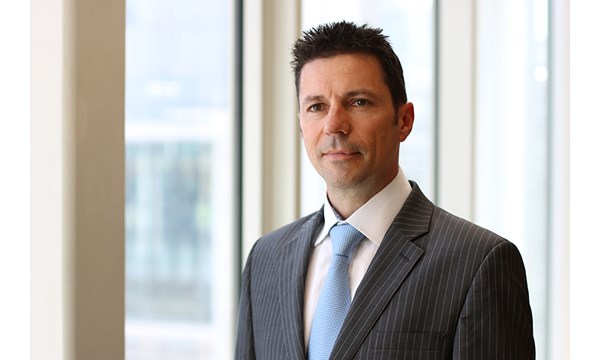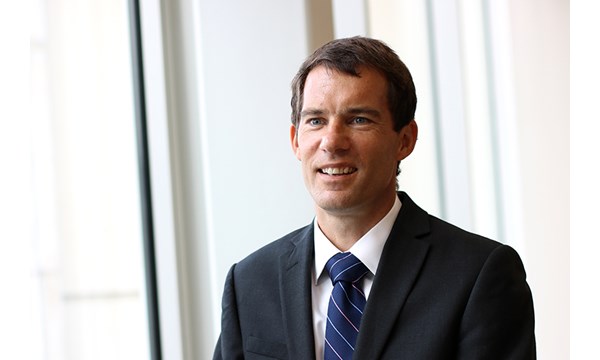Sign up today to get the best of our expert insight in your inbox.
What's on CEOs' minds
Climate policy, commodity prices and corporate strategies
4 minute read
Simon Flowers
Chairman, Chief Analyst and author of The Edge

Simon Flowers
Chairman, Chief Analyst and author of The Edge
Simon is our Chief Analyst; he provides thought leadership on the trends and innovations shaping the energy industry.
Latest articles by Simon
-
The Edge
Unlocking the potential of white hydrogen
-
The Edge
Is it time for a global climate bank?
-
The Edge
Are voters turning their backs on the EU’s 2030 climate objectives?
-
The Edge
Artificial intelligence and the future of energy
-
The Edge
A window opens for OPEC+ oil
-
The Edge
Why higher tariffs on Chinese EVs are a double-edged sword
Gavin Thompson
Vice Chairman, Energy – Europe, Middle East & Africa

Gavin Thompson
Vice Chairman, Energy – Europe, Middle East & Africa
Gavin oversees our Europe, Middle East and Africa research.
Latest articles by Gavin
-
The Edge
Unlocking the potential of white hydrogen
-
The Edge
Is it time for a global climate bank?
-
The Edge
Are voters turning their backs on the EU’s 2030 climate objectives?
-
The Edge
What will define LNG’s three phases of market growth?
-
The Edge
The coming low carbon energy system disruptors
-
The Edge
Could US data centres and AI shake up the global LNG market?
Fraser McKay
Head of Upstream Analysis

Fraser McKay
Head of Upstream Analysis
As head of upstream research, Fraser maximises the quality and impact of our analysis of key global upstream themes.
Latest articles by Fraser
-
The Edge
How higher interest rates could hold up energy transition investment
-
Opinion
What's new in global upstream
-
Opinion
Is upstream oil and gas delivering on decarbonisation?
-
Opinion
The biggest topics in global upstream
-
The Edge
Is consolidation changing upstream’s appetite for investment?
-
Featured
Upstream oil & gas: region-by-region predictions for 2024
Ed Crooks
Vice-Chair, Americas

Ed Crooks
Vice-Chair, Americas
Ed examines the forces shaping the energy industry globally
Latest articles by Ed
-
Opinion
How global trade can help build the clean energy economy
-
Opinion
Biden exit shakes up US presidential race
-
The Edge
Is it time for a global climate bank?
-
Opinion
Are low profits to blame for the energy transition lagging?
-
Opinion
Day 3: How can we finance the energy transition? Discussions from the final day of the Reuters Global Energy Transition Conference 2024
-
Opinion
Day 2: The Energy Gang at The Reuters Global Energy Transition Conference 2024
Tom Ellacott
Senior Vice President, Corporate Research

Tom Ellacott
Senior Vice President, Corporate Research
Tom leads our corporate thought leadership, drawing on more than 20 years' industry knowledge.
Latest articles by Tom
-
Opinion
Can ExxonMobil make attractive returns from its US CCUS portfolio?
-
Opinion
How do integrated companies position themselves in the changing downstream landscape?
-
The Edge
How and why big oil is strengthening its oil and gas exposure
-
Opinion
ADNOC acquires 10.1% stake in CCUS player Storegga
-
Opinion
ADNOC acquires 10.1% stake in CCUS player Storegga
-
Featured
Upstream corporate 2024 outlook
Murray Douglas
Vice President, Hydrogen and Ammonia Research

Murray Douglas
Vice President, Hydrogen and Ammonia Research
Murray is responsible for Wood Mackenzie’s Global coverage across the hydrogen value chain.
Latest articles by Murray
-
Opinion
The outlook for European power and renewables
-
Opinion
Hydrogen costs in 2024: what you need to know
-
Opinion
Big ambitions but slow progress: global hydrogen market developments in Q4 2023
-
Featured
Hydrogen 2024 outlook
-
Opinion
The challenges and opportunities in Europe’s oil & gas, CCUS and hydrogen sectors
-
Opinion
A transformative journey: oil & gas, CCUS and hydrogen in Europe
We hosted our fifth EMEA Global Energy and Natural Resources Summit in London last week. Here are the big themes debated on the stage.
1. Energy transition – pragmatism is trumping ambition
The UK, ahead even of the EU on its decarbonisation ambitions, announced on the eve of our Summit that it would row back on some 2030 targets. The actual changes are relatively minor, the message intended to allay voters’ fears around the cost of the transition ahead of next year’s general election. Nonetheless the UK Government has followed industry transition leaders, notably BP and Shell, which leaned back towards oil and gas production earlier this year.
Post-COP26 two years ago, a triumvirate of governments, industry and finance were in broad alignment in the pursuit of net zero. Following the invasion of Ukraine, each has softened on short-term goals under the justified umbrella of mid-term energy security. There are other more selfish motives: governments, and not only the UK, are concerned about the impact of transition costs on the voting public; Big Oil about the depressed stock market ratings for investing in low carbon; while investors want better returns from the sector.
The pragmatic new alignment will slow the pace of the transition in the next few years. Happily, the UK Government’s parallel announcement of plans to strengthen the transmission network and debottleneck grid connections for renewables projects suggests no u-turn in overarching policy.
3. Upside for oil prices
Oil’s move above US$90/bbl reflects a market that is tightening fast. The extension of supply cuts by OPEC+ through year-end coincides with global demand reaching record highs this quarter. A sustained draw down of inventories and attractive yields on the forward curve through Q4 2023 heighten the risk of price spikes in the coming months.
3. Gas market volatility
Global gas prices have tumbled from the highs of a year ago. But the market is still prone to volatility for the next three years until large volumes of new supply from projects under development come onstream. The recent labour strikes at Australian LNG facilities sparked a 40% jump in European prices, evidence enough that markets remain extremely vulnerable to supply disruption.
With cost inflation leading to fewer LNG project FIDs in 2023 than anticipated, the predicted oversupply after 2026 when the big Qatar and US LNG projects come onstream could be short-lived.
4. LNG, the last big play in fossil fuels
Gas demand will prove more resilient than oil in the longer term, playing a critical role in decarbonising power by displacing coal in developing markets. Pipe gas will come under threat, particularly in Europe. But LNG looks a winner, touted as an ‘advantaged segment’ among fossil fuels with Asia driving growth ever higher over the next two decades. China is central to the thesis, set to become the world’s first – and perhaps only – 100 mmtpa market as soon as 2027.
5. Upstream positions for a more prolonged future
The flip side of pushing transition targets to the right is more oil and gas. Big Oil, currently reaping the benefits of legacy upstream portfolios, has concluded that if the demand is there, they will supply it. This means a return to organic investment and M&A to extend production and cash flow lifespans into the 2030s. The consequences? A tougher ask to deal with dealing Scope 3 emissions; and judging when to go harder into low carbon.
No one thinks US$90/bbl signals a new upcycle like those of yore – there’s little appetite in the industry for unconstrained growth. There was some disagreement though with Woodmac’s view that current levels of spend, US$500 billion in real terms, could prove sufficient to meet demand in coming years. E&P companies are intent on maintaining capital discipline and delivering quick cycle times for new projects despite supply chain and cost pressures.
Larger IOCs will allocate more capital to strengthening the mid-term durability and quality of the portfolio. It is all about bringing low carbon, low-cost barrels to market in the most efficient and timely way possible. The Majors also see opportunities to work with NOCs on projects that can help to decarbonise resource-holders’ portfolios.
6. Governments must act to incentivise low carbon technologies
No one disputes the growth opportunity. Power demand doubles in WoodMac’s base case by 2050 and triples in a 1.5˚C scenario. Scaling up emerging low-carbon technologies including hydrogen, CCUS and battery storage offers sustained investment opportunities.
But the economics must work if governments are to succeed in ‘crowding in’ private capital to finance growth. Cost inflation, tightening supply chains and a higher cost of capital have taken their toll on returns in the last two years. Zero bidders in the UK’s Allocation Round (AR) 5 for offshore wind earlier this month is just the latest example of unworkable terms for developers.
Governments must be prepared to set incentives, whether PPAs, contracts-for-differences or offtake agreements, which allow investors to make a reasonable return. It’s not just the UK’s now super-important AR 6 next year that is at risk. Project pipelines for green hydrogen and CCUS are brimming, but in the current climate few will proceed to FID. The risk is that governments’ failure to act now will slow the build out of low carbon technologies, making it harder to bring down costs and putting even more pressure on net zero targets.
Thanks to colleagues Gavin Thompson (Vice Chair EMEA), Fraser McKay (Upstream), Ed Crooks (Vice Chair Americas), Tom Ellacott (Corporate Analysis) and Murray Douglas (Hydrogen).
Make sure you get The Edge
Every week in The Edge, Simon Flowers curates unique insight into the hottest topics in the energy and natural resources world. Sign up today using the form at the top of the page to get The Edge delivered to your inbox.









